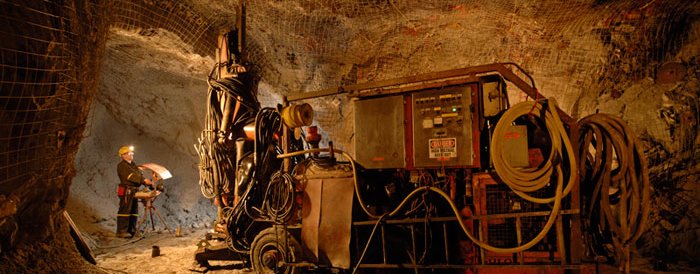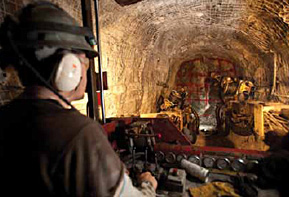
This leader in precious metal mining was a company that was victimized by their own success. Over the years, several mergers and acquisitions enabled them the opportunity to enjoy the benefits of favorable market prices for their product, limited competition from other regional mining organizations and a healthy balance sheet increasing margins on their product.
As market conditions began to change and margins eroded, they soon recognized the need to get back to the basics which made them an industry leader and to make this change quickly. Although they clearly recognized the need for change, they also recognized the difficulty of changing the culture of an organization over 800 people strong in the operating divisions alone in a way that was both sustainable and did not unfavorably interrupt current operations.
The engagement began with a frank discussion of operating objectives at the executive level of the organization with The AMS Group operating professional .
This discussion also included a dialog of operating problems and concerns. This discussion enable The AMS Group to understand the needs of the organization. This also provided the opportunity for client executives to
gain an intimate understanding of the Adept process and its people.
.
This discussion also included a dialog of operating problems and concerns. This discussion enable The AMS Group to understand the needs of the organization. This also provided the opportunity for client executives to
gain an intimate understanding of the Adept process and its people.
After developing a working partnership with The AMS Group, both organizations began the analysis phase of the engagement. The analysis unfolded over the next several weeks with the objective of identifying the root cause of operating barriers. With the assistance and guidance of the client, The AMS Group professionals were able to identify the absence of critical supervisory behaviors, such as the identification, measurement and taking action on operating barriers. Also, Mine Captains and Superintendents were not utilizing existing measurements and metrics to measure and gauge progress. All levels of management were not holding subordinates accountable for agreed upon goal attainment and there was little or no implementation of existing training plans. The client was the key to this process by validating the findings through their knowledge and experience.
At the end of this process, The AMS Group was able to quantify the impact of what was understood to be a systemic behavior deficiency within the clients culture. The cost in dollars of the lost production in excess labor and product not sent to the market place was substantial, over $10M annually at current labor rates. With a newly developed understanding of their operating culture based on the in-depth observations and data developed by the combined Client and AMS Group team and their understanding of the The AMS Group business case model, the client was able to confidently move forward to the next phase of the process.
It was determined that the scope of the project would include production, maintenance and planning operations for 2 of the four active mining sites simultaneously over the course of an 8 month period. Additionally, the partnership agreed that success would be measured against improvement to the previous year's performance in the categories of production (tons hoisted) and labor cost dollars schedule attainment.
Operational improvements were focused on execution of existing processes by the workforce, as well as, development and implementation of revised work standards and a change in the workforce management behaviors of the first and second line management teams.
In each area, Supervisors and Foremen implemented new management tools that required short interval follow-up on work assignments. Additionally, work crews began to be loaded with a full day of measurable work based on long-range plans that are broken down into weekly buckets. Also, direct labor activities were revisited by the first and second line supervisors and foremen. New standards for working (Reasonable Expectations, RE's) began to be developed and utilized. Operating improvements also included:
At all levels, the management team took responsibility to maintain the momentum generated during the improvement process. It became vital that the message sent to the workforce was one that communicated a permanent change in the organization's culture. In order to guarantee perpetuation, the client's leadership built a process around Key Performance Indicators that can be used to assign accountability to key members of management and tracked over time to gauge improvement. In fact, management soon became driven to improve the results that were gained during the engagement. Key mechanisms remain in place to ensure the sustainability of the process and foster future growth. Others have change and evolved as the business and operational events changed operating requirements. The new operating model has included the flexibility needed to keep pace with change. The process of self critiques ensured the sustainability of the operating system and operating results.
“The schedule (work planning and scheduling tool) is incredible, for the shops, it's incredible.” – (Shop Supervisor)
“It takes time, but scheduling (work planning and scheduling tool) is good; sure pays off.” – (Mechanical Supervisor)
“We've made some big changes, overall it's good.” – (Services Superintendent)
“I'm still excited… I'm quite pleased.” – (General Foreman)
“It was the right thing to do. It got everyone looking at the same key indicators and got everyone focused in the same direction.” - (Maintenance General Foreman)